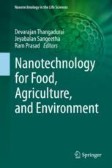Search
Search Results
-
Transcriptome Analysis of Nitrogen Metabolism, Transcription Factors, and Indigoid Biosynthesis in Isatis indigotica Fort. Response to Nitrogen Availability
Isatis indigotica Fort. is a popular herb in traditional Chinese medicine. It possesses pharmacological activities against various diseases,...

-
Hairy root culture of Strobilanthes cusia for the production and enhancement of indigo biosynthesis
Strobilanthes cusia is an indigo-yielding plant and scarcity of both wild and cultivated plants has increased the supply pressure of the natural dye....

-
Self-pigmenting textiles grown from cellulose-producing bacteria with engineered tyrosinase expression
Environmental concerns are driving interest in postpetroleum synthetic textiles produced from microbial and fungal sources. Bacterial cellulose (BC)...

-
Indoles and the advances in their biotechnological production for industrial applications
Indole is a signalling molecule produced both by bacteria and plants. In this review its signalling role between microbes and in particular in the...

-
Pigments and Colors
Color is one of the most essential and important sensations of life. In nature, pigments and natural colors are abundant in plants, microorganisms...
-
Phyconanoremediation: a sustainable approach to deal with environmental pollutants heavy metals and dyes
Environmental pollutants have been increasingly detected and quantified in each sphere-air, water and soil, and hence there are growing concerns...

-
Isatis tinctoria L. (Woad): Cultivation, Phytochemistry, Pharmacology, Biotechnology, and Utilization
Isatis tinctoria L. (Brassicaceae) is an herbaceous species with an ancient and well-documented history as an indigo dye source in temperate climates...
-
Biogenic Nanoparticles for Degradation of Noxious Dyes
Green synthesis of nanoparticles utilizing renewable bioresources has emerged as a new concept in present nanotechnology studies with potential...
-
Cloning and characterization of indole synthase (INS) and a putative tryptophan synthase α-subunit (TSA) genes from Polygonum tinctorium
Key messageTwo cDNAs for indole-3-glycerol phosphate lyase homolog were cloned from
Polygonum tinctorium. One encoded cytosolic indole synthase...
-
Transcriptome analysis for identification of indigo biosynthesis pathway genes in Polygonum tinctorium
Indigo is the most important blue dye for textile dyeing and is biosynthesized in Polygonum tinctorium . Some biochemical studies related to...
-
Indole: a signaling molecule or a mere metabolic byproduct that alters bacterial physiology at a high concentration?
Indole is an organic compound that is widespread in microbial communities inhabiting diverse habitats, like the soil environment and human...
-
Biotechnological Applications of Styrene-Degrading Microorganisms or Involved Enzymes
The development of sustainable technologies which are more ecofriendly as common alternatives is a major goal of biotechnology. In this context,...
-
Identification and characterization of an indigo-producing oxygenase involved in indole 3-acetic acid utilization by Acinetobacter baumannii
Acinetobacter baumannii harbours a gene cluster similar to the iac locus of Pseudomonas putida 1290, which can catabolize the plant hormone indole...

-
Effect of natural mediators on the stability of Trametes trogii laccase during the decolourization of textile wastewaters
The purpose of the present study was to determine the effect of natural mediators on the stability of the Trametes trogii crude laccase in the...
-
Versatile capacity of shuffled cytochrome P450s for dye production
DNA family shuffling is a relatively new method of directed evolution used to create novel enzymes in order to improve their existing properties or...

-
Sex-Specific Tyrian Purple Genesis: Precursor and Pigment Distribution in the Reproductive System of the Marine Mollusc, Dicathais orbita
Exploitation of Tyrian purple from muricid molluscs, since antiquity, has prompted much interest in its chemical composition. Nevertheless, there...

-
Decolorization and biodegradation of Indigo carmine by a textile soil isolate Paenibacillus larvae
The potential of recently isolated bacteria Paenibacillus larvae for the effective decolorization of Indigo carmine was evaluated. The effects of...

-
Indole is an inter-species biofilm signal mediated by SdiA
BackgroundAs a stationary phase signal, indole is secreted in large quantities into rich medium by Escherichia coli and has been shown to control...

-
Controlling Regiospecific Oxidation of Aromatics and the Degradation of Chlorinated Aliphatics via Active Site Engineering of Toluene Monooxygenases
Toluene monooxygenases from pseudomonads are powerful enzymes whose activities have not been fully appreciated. Recently the literature was corrected...
-
Promotion or retardation of the growth of adenine auxotrophs ofCandida albicans by purines, pyrimidines and nucleosides
A study has been made of the growth responses to purine and pyrimidine metabolites shown by sixteen ultraviolet-induced adenine requiring mutants of Ca...
